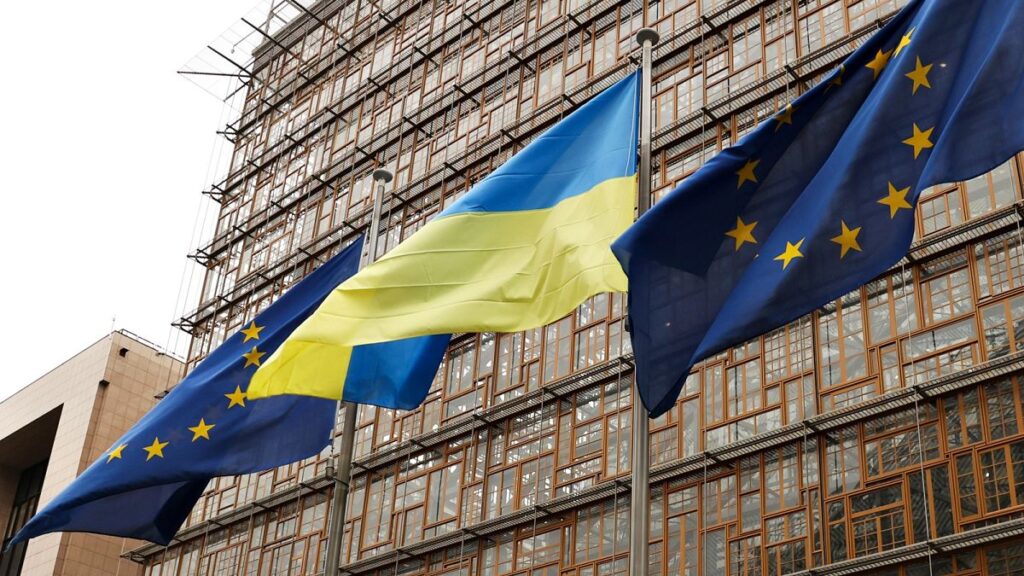Under the G7 plan, the windfall profits earned by Russia’s frozen assets will be used to gradually repay a multi-billion loan for Ukraine.
European Union countries have given their green light to an unprecedented plan to issue a €35 billion loan to support Ukraine’s war-battered economy using the immobilised assets of Russia’s Central Bank as collateral.
The deal is part of a broader initiative by G7 allies to provide €45 billion ($50 billion) to Kyiv as soon as possible. The country is struggling to contain a renewed Russian offensive that has badly damaged its power system and depleted its military stocks.
The €35 billion will be “undesignated” and “untargeted,” according to EU officials, meaning the Ukrainian government will have maximum flexibility to spend the assistance. Brussels hopes to start doling out the money early next year.
The agreement, reached on Wednesday evening by ambassadors, comes a day after Hungary confirmed it would block a key change in the EU sanctions regime until after the United States elects its next president on 5 November.
The proposed amendment will see member states renewing the restrictions on the frozen assets, worth about €210 billion across the bloc, every 36 months rather than every six months, as the current practice dictates. (Changing the sanctions law requires unanimity while the loan went through by a qualified majority.)
“We believe that this issue should be decided – the prolongation of the Russian sanctions – after the US elections. That was the Hungarian position,” Mihály Varga, Hungary’s finance minister, said on Tuesday after a ministerial meeting in Luxembourg.
The longer renewal period is meant to make the ground-breaking project more predictable and reassure the misgivings expressed by G7 allies. The US, in particular, worries that one single EU country could, at any given time, block the renewal of sanctions, unfreeze the assets and throw the entire project into disarray.
The fears mostly relate to Hungary, the most Russian-friendly member state, which has acquired a reputation for blocking sanctions until it secures controversial concessions.
Under the G7 plan, the windfall profits earned by the assets will be leveraged to gradually repay the amount of money that each ally will lend to Ukraine. If these profits are no longer available, the West will have to foot the bill.
Originally, the EU and the US were supposed to contribute to the loan in equal parts with €18 billion ($20 billion) each, but the lack of specifics on Washington’s side led Brussels to drastically ramp up its share up to €35 billion.
The bloc’s contribution could be reduced if the US, Canada, the UK and Japan end up making bigger pledges. Australia, which is not in the G7, could also chip in.
Wednesday’s agreement, which still needs to be ratified by the European Parliament, paves the way for the EU to raise its multi-billion share before the end of the year and begin disbursements in early 2025.
However, Hungary’s refusal to amend the sanctions regime could slow down the final decision at the G7 level.
The US is expected to put more cash on the table if the renewal period is extended to 36 months. The proposal already falls short of Washington’s ideal goal (an indefinite renewal), so Budapest’s hold-up is unlikely to help negotiations.
In reaction to the deal, a diplomat noted that “one piece is still missing.”
Read the full article here

